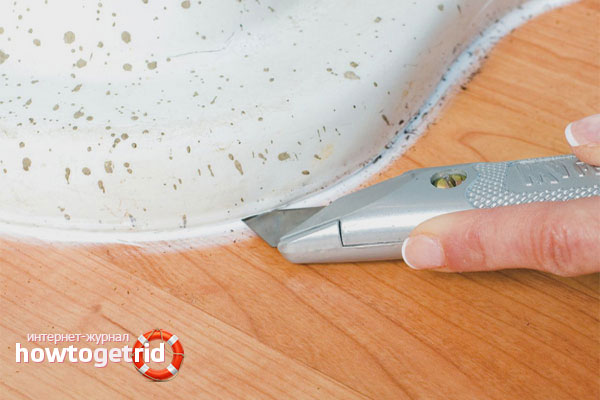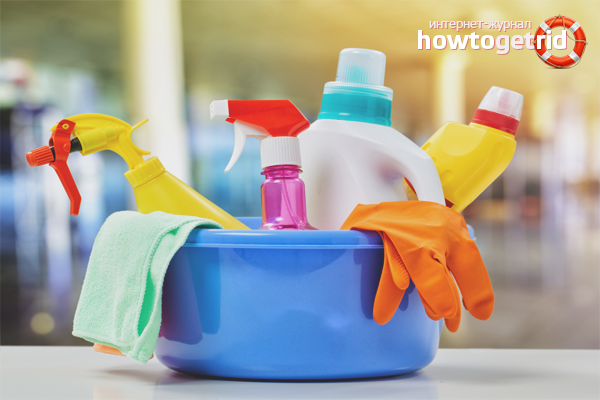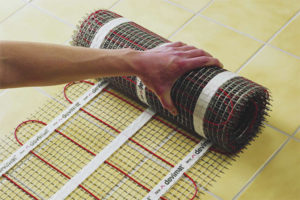The content of the article
Silicone sealants are recognized as the best material for sealing joints and joining smooth surfaces. In addition, they are considered to be the most versatile - they have a plastic structure, withstand temperature drops, durable, used in everyday life and in industrial construction.
Types and properties of silicone sealants
All silicone sealants are ready for use and are divided into one-component and two-component ones.
Single component sealants are suitable for direct use and are used in installation, repair, construction works. Two-component sealants require thorough mixing before use and are used for industrial purposes.
Depending on the main substance, silicone one-component sealants can be of the following types:
- alkaline;
- acidic;
- neutral.
Acid sealants are considered universal, but they are incompatible with non-ferrous metals because they cause accelerated corrosion. Neutral sealants are combined with all kinds of materials. Alkaline view refers to a specialized and on sale infrequently.
In addition to the main components in the composition of sealants are used additives that have an important role for the application. Dyes give color, fungicides - destroy mold and fungi, extenders - reduce the viscosity of silicone.
Silicone Sealants Applications
Possessing good adhesion, high elasticity (up to 800%), a large range of temperature of use (from -60 ° to + 300 °) silicone sealants are able to provide a reliable, waterproof, UV-resistant compound. In everyday life, their use is very diverse, ranging from sealing joints in the bathroom and ending with the installation of street lamps.
An important property of silicone sealants is resistance to aggressive factors, which makes them used for construction and repair work outdoors, indoors, in a wet environment.
For convenience, the names of sealants most often reflect their main purpose: "Construction", "Aquarium", "Automobile", "Universal", "Insulating". Depending on the needs, they can be selected, including according to this criterion.
Means and methods for removing sealant
The excellent properties of silicone sealant in terms of adhesion turn into a major problem if it is to be removed. Since the solvent has completely evaporated and the sealant has polymerized, it is very difficult to remove. In the liquid state, it is easily cleaned with a sponge or cloth with a small amount of alcohol or gasoline.
Important. A good result when cleaning can be achieved by applying both mechanical and chemical methods to remove the sealant.
Mechanical removal involves the use of tools, pumice, abrasives. Chemical methods are carried out using special agents that soften and dissolve the sealant.
Effective for removing sealant special tools in the form of aerosols, pastes, liquids. They are fairly simple to use: they are applied to the soil with a brush, spray or sponge, they are kept for several hours, after which the sealant softens and is easily removed.
Important. The chemical solvent can damage rubber, enamel surfaces, paint, baseboards. When working with it, you need not to go beyond the joint and not to remove too much, because otherwise there is a risk of a leak in the seam.
In addition to special solvents, universal means are also used as solvents: gasoline, white spirit, acetone. Since silicone belongs to the same group of organosilicon compounds as white spirit, first of all from all home remedies you should try to use it. First you need to test its action on an inconspicuous site.
When the silicone is heated above its operating temperature (300 ° C), it becomes soft and easily removed. To achieve this effect, you can use a building dryer that works with high temperatures.This method is very useful when working on glass, mirror, aluminum surfaces.
How to remove silicone sealant from a tile
Ceramics are usually quite resistant to chemicals, so you can use almost any kind of solvent. Since tile is different in quality and has a different degree of strength, it is important not to overdo it when cleaning the seams, so as not to damage its surface. Even before the work starts, you need to weigh all the nuances, pros and cons for a particular case.
The removal of silicone occurs in the following order:
- Cut off the maximum possible layer with a sharp painting knife or blade, so as not to scratch and damage the tile.
- To soften the remaining silicone, use is made of industrial sealant removers: Penta-840, Silicon-Entferner.
- After softening the sealant, remove it with a wooden scraper.
As a solvent, you can use white spirit, gasoline, kerosene. You can apply the soap solution, but then the softening will take a long time.
How to remove silicone sealant from bath
The choice of method, means for removal and the order of work depend on the material of the bathroom. Cast iron, steel or acrylic - each type has its own characteristics.
Acrylic baths
To remove the sealant from acrylic baths, choose special tools made by industrial means. Many manufacturers of showers and bathtubs have a line of special tools for cleaning and caring for such products.
When working with acrylic baths is prohibited to use:
- organic solvents;
- abrasives;
- knives, scrapers, other metal, scratching items.
To remove the old sealant, the silicone solvent is applied and left for a day. A day later, it is removed homemade wooden shovels. The surface is wiped dry and degreased with vodka.
Steel and cast iron baths
For steel and cast iron baths are suitable as mechanical means of removal, and chemical. However, it is necessary to handle enameled surfaces very carefully so as not to damage them and not to scratch them.
- The first layer of sealant is cut off with sharp tools: wallpaper or stationery knives, blades.
- Old sealant scraped with a spatula, scraper or float.
- The remaining sealant is erased with fine abrasive materials: pumice, emery paper.
After removing all the silicone, a dirty, greasy stain remains in its place. To eliminate it, use powder detergents for cleaning kitchen surfaces. It is necessary to pour a small amount of powder on the cloth and in a circular motion to clean the stain. Then rinse contaminated sites with hot water and detergent.
Important. Fatty unaesthetic stains from sealant residues can be wiped with fine sodium chloride. To do this, pour salt on cheesecloth, folded in several layers. Sprinkle salt with water and rub in dirt in a circular motion. This is a fairly effective way, and its result depends on the age of the sealant, the quality of the silicone and the material of the bathroom.
Since old silicone stains are sufficiently resistant, solvents are used to remove them.
- The thickest layer of sealant is removed by mechanical means.
- On the cleaned surface, using rags, put gasoline, acetone or solvent.
- For some time, the silicone softens and turns into a gelatinous mass.
- In this form, it is easily removed from the surface.
The remaining stain is removed with baking soda and rinsed with hot water and liquid soap.
On a note
- In order to avoid the appearance of stains and damage, when working with any chemical means, you must first test them in an inconspicuous area.
- In general, chemicals are more effective, but they are aggressive not only for the surface, but also for the skin, eyes, and respiratory organs.
- All work with sealants and solvents carried out in gloves. When working with aerosols-solvents sealants necessarily apply protective equipment: goggles and a respirator.
- Silicone sealants have a harmful effect on products made of polyacrylate and polycarbonate, so you should not use them together. The color of the sealant is selected at the time of purchase, since its further coloring is impossible.
- When working with a sealant, it is important to wipe out all the drops and stains. At the stage of application, it is better to use masking tape to get perfect seam contours and a clean surface. If the sealant is applied qualitatively and carefully, there will be no need to remove it later.
To remove the old sealant will take time and some effort. However, if you do everything correctly, it will be possible not only to remove the old silicone, excess and dirt, but also to correct the seams, making them neat and inconspicuous.
Video: how to remove silicone sealant













To send